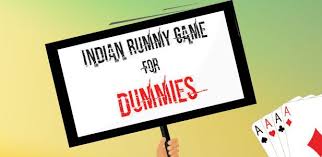Rummy For Dummies, is a popular and timeless card game enjoyed by players of all ages around the world. Its appeal lies in the blend of strategy, skill, and chance, making it an engaging game for both casual and serious players. If you’re new to Rummy or looking to improve your understanding of the game, this guide is for you. We’ll cover the basics, including the rules, gameplay, strategies, and tips to help you become a confident Rummy player.
What is Rummy?
Rummy is a group of matching-card games, which means the primary objective is to form sets and sequences of cards. A set is a group of three or four cards of the same rank but different suits (e.g., 7♦ 7♠ 7♣), while a sequence is a group of three or more consecutive cards of the same suit (e.g., 5♠ 6♠ 7♠). The goal is to arrange all your cards into these valid combinations and be the first to go out by discarding your last card.
Basic Rules of Rummy
1. Number of Players
Rummy can be played by 2 to 6 players. The game dynamics can vary slightly depending on the number of participants.
2. Deck
The game typically uses a standard 52-card deck for 2 to 4 players. For more players, two decks may be combined, and jokers can be included as wild cards.
3. Dealing Cards
- The dealer is chosen randomly, and the deal rotates clockwise after each round.
- For 2 players, each is dealt 10 cards; for 3 or 4 players, each is dealt 7 cards; and for 5 or more players, each is dealt 6 cards. The remaining cards form the draw pile, placed face down, and the top card is turned face up to start the discard pile.
4. Gameplay
Drawing and Discarding:
- At the beginning of each turn, a player draws one card, either from the draw pile or the discard pile.
- After drawing, the player can form and lay down any sets or sequences if possible.
- The turn ends with the player discarding one card onto the discard pile.
Going Out:
- A player can “go out” when they have laid down all their cards in valid sets or sequences and have a discard card left.
- Going out ends the round, and the scores are calculated.
Scoring
In Rummy, scoring is based on the cards remaining in the players’ hands after someone goes out. The cards are valued as follows:
- Number cards (2-10): Face value.
- Face cards (J, Q, K): 10 points each.
- Aces: 1 point (or 11 points if used high, depending on the game variant).
- Jokers: 0 points if used as wild cards.
The player who goes out scores zero, and the other players score points based on the value of their remaining cards. The game can be played to a predetermined score, such as 100 or 500 points, with the player with the lowest score being the winner.
Strategies for Winning Rummy
- Forming Sequences First:
- Sequences are more challenging to form than sets, so prioritize making them. In some variants, a pure sequence (without jokers) is required before forming other combinations.
- Watch Your Opponents:
- Pay attention to the cards your opponents pick up and discard. This can give you clues about their hands and help you avoid discarding cards that could benefit them.
- Manage High-Value Cards:
- Holding onto high-value cards like face cards and aces can be risky, as they contribute significantly to your score if left in hand. Try to meld them early or discard them if they don’t fit into your strategy.
- Use Jokers Wisely:
- Jokers can be used to complete sets or sequences, but they are best used sparingly. Consider keeping jokers for tough-to-complete combinations or for going out.
- Plan Your Discards:
- Be strategic with your discards. Avoid discarding cards that your opponents may need, and try to discard cards that are unlikely to help them complete their sets or sequences.
- Keep Track of the Draw Pile:
- In games with a finite draw pile, keep an eye on its size. As it depletes, the game moves towards the end, and it’s essential to be prepared to go out.
Common Variants of Rummy
- Gin Rummy:
- A two-player variant where the goal is to form sets and runs, with an emphasis on going out with minimal deadwood (unmatched cards).
- Indian Rummy:
- Played with two decks and often includes jokers. Players must form at least two sequences, one of which must be a pure sequence (without jokers).
- Kalooki:
- Similar to traditional Rummy but with the addition of jokers, which can be used as wild cards to complete sets and runs.
- Canasta:
- A variation where players form melds of seven cards (called Canastas). The game involves multiple rounds and uses two decks.
- 500 Rummy:
- A point-based version where players score points for melding cards and reaching a target score, often 500 points.
Conclusion
Rummy is a versatile and engaging card game that can be enjoyed by beginners and experienced players alike. Whether you’re playing casually with friends or looking to hone your skills, understanding the basic rules and strategies is essential. By focusing on forming sequences, managing high-value cards, and observing your opponents, you can enhance your gameplay and increase your chances of winning. So grab a deck of cards, gather your friends, and dive into the exciting world of Rummy.




